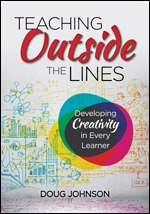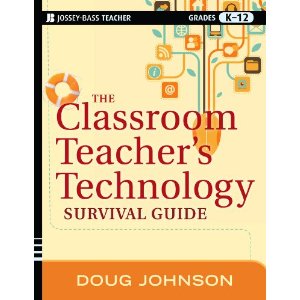BYOD and the school supply list
 Thursday, July 31, 2014 at 05:00AM
Thursday, July 31, 2014 at 05:00AM ... another dang school year started with my students not having immediate, continuous access to [the school's online resources and the Internet]. And the simple reason is that there still isn't a device available that's right for kids and schools. Where is the computing/communications hardware gizmo that:
- weighs less than two pounds?
- runs at least eight hours on a battery charge?
- is 802.11x compliant?
- can be dropped without breaking?
- comes only with a full-featured Web browser for software?
- has a screen that can be read for a long time without eyestrain?
- sells at a price point most parents can afford -- let's say under $200?
from Disappointed Again, Education World, November 2006
For the first year ever, I may not be able to express my disappointment over the lack of affordable tools for student use. Chromebooks, tablets, and netbooks are reaching a price point "most parents can afford."

Each year we send a letter to parents in the district advising them on what specs they should be looking for if shopping for their children who are students in our school. We don't recommend brands or models or even whether to go tablet or notebook, but we ask them to look for devices that, among other things, have "a full functioning, recent web browser (Firefox, Explorer, Chrome, Safari) that will allow it to access GoogleApps for Education tools and documents, the Infinite Campus student portal, Moodle 2.0, the state of Minnesota's ELM content databases, and the Destiny library catalog along with other e-resources the district provides."
While I am not promoting any product, Chromebooks seem to meet this criteria rather well. See the screenshot of a GoogleSearch on ACER 720s above. Not fast, not fancy, but they get the job done for the most part.
So here is my question: Why should we not put these on the school supply list, especially in our high schools. Before you suck in a fly with that enormous gasp of horror, consider other items we routinely place on school supply lists and their costs.
Fifteen years ago, I was required by my son's high school to purchase a graphing calculator from Texas Instruments that cost about $130. (The first was promptly lost so I got to buy two, the second which has gathered dust since the class ended.) Given inflation, a $200 Chromebook isn't that much more than that graphing calculator - and perhaps even less than all the notebooks, planners, pens and pencils, trapper keepers, and all the other junk that clutters backpacks and lockers if the device lasts a couple years.
One of the frustrations our teachers have experienced with BYOD is, of course, that students bring many different devices and on an unreliable basis. Having a specific personally owned device as a required school supply would go a long way in ending this problem.
Anybody in a public K-12 system who has tried this approach to BYOD?
This came across my radar just after posting this entry:
According to the Huntington Backpack Index, parents can expect to pay:
- $642 for elementary school children, an 11 percent increase compared to 2013
- $918 for middle school children, a 20 percent jump compared to 2013
- $1,284 for high school students, a 5 percent increase compared to 2013








Reader Comments (5)
Surely if you start specifying a device then you are defeating one of the key purposes of BYOT. That is, to allow students to choose and bring a personal device that best suits their own learning needs and style.
This is exactly how our program works. It is BYOD but the device must meet our specifications (Managed Chromebook with 6+ hours of battery life and a case) as your primary device. You can add other devices on the of that one if you choose, and secondary devices can be used in the classroom under the teacher's discretion.
The Chromebook is a mandatory school supply.
Here is our site:
Http://tinyurl.com/207chromebooks
Meanwhile, parents and students in our district still have to buy that over $100 graphing calculator (which does what most students can already do on their phones...).
Hi Librareanne,
I certainly agree with that and I value the right for all people to use the tools they prefer. One does need to weigh that right with a school's need to provide resources and methods that are standard enough to be affordable and maintainable. I see benefits and problems with both approaches.
Doug
HI Hank,
Thanks for the link and providing the model. You are always ahead of the game!
Doug
Hi Ninja,
Yeah, this may be prove to be the biggest stumbling block: Texas Instruments has a headlock on a lot of math departments whose curriculum seems to be device specific. A real challenge.
Doug
We chose to buy the calculator and loan it like a textbook and students purchase a more versatile device.